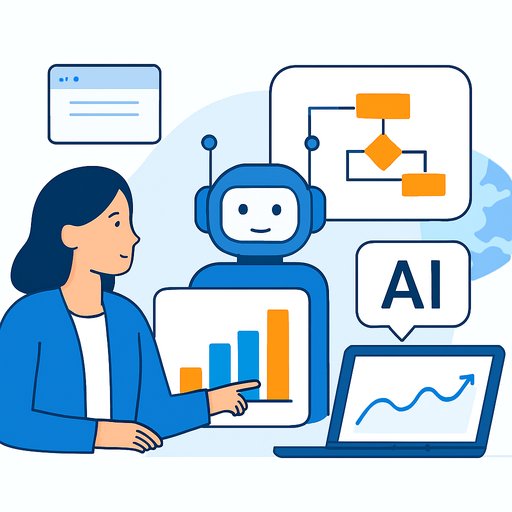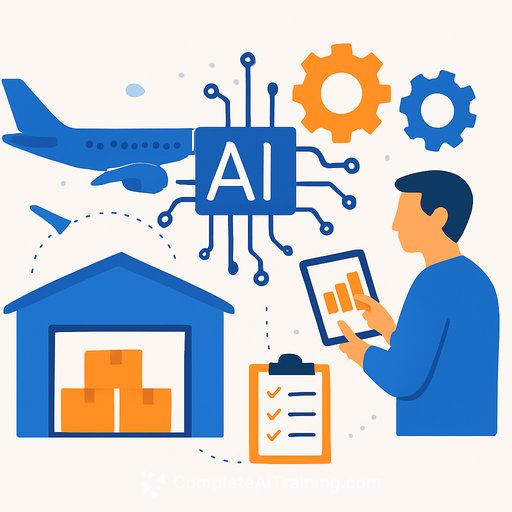Celonis feeds AI agents with process intelligence to sharpen operational decisions
At Celosphere 2025, Celonis announced updates that turn its Process Intelligence Platform into a stronger base for AI-driven operations. The pitch is simple: feed AI agents with live operational context so they act with accuracy, not guesses. For operations leaders, this is about removing friction in day-to-day execution, not another lab experiment.
Operational context for AI agents gets deeper and more usable
Celonis is expanding its Process Intelligence Graph to pull in more data types from newer sources. A new Data Core connects data lakes such as Databricks and Azure Data Lake through a zero-copy, bi-directional setup, so teams can use live data without building custom pipelines or duplicating tables. That same context can then flow back into Databricks' Agent Bricks to build production-grade agents that reflect the current state of your business, not last quarter's snapshot.
It also now captures desktop actions-keystrokes, clicks, scrolls-and stitches them into process context. That enables stronger task mining and automated task discovery. On top of that, enterprises can import architectural blueprints so AI agents know which systems handle which steps, selecting the right tool for each task instead of guessing.
Celonis introduced object-centric process mining tools to spot issues at process intersection points like transport, storage, packing, and shipping-where delays usually start. The Orchestration Engine has been extended to run agents alongside people and systems, turning insights into automated workflows. And notably, Celonis is launching what it calls the first Model Context Protocol server built for process intelligence-so agents get dynamic, current context at decision time.
Why this matters for Operations
- Fewer bad decisions from agents: dynamic process context reduces reliance on stale or incomplete data.
- Faster exception handling: object-centric views expose where work gets stuck across teams and systems.
- Cleaner automation handoffs: orchestration coordinates agents, people, and applications in one flow.
- Quicker time to value: zero-copy lake connections cut out heavy integration work.
As Holger Mueller of Constellation Research put it, process intelligence helps AI work as intended. By analyzing processes with a loss-free, object-centric model, Celonis offers a workable alternative to traditional RAG approaches that can miss operational nuance.
Agents you can use now
- Rollio Process Collaboration Agent: automates ITSM, procurement, and more; resolves process exceptions by pulling the right people and context from Celonis.
- Trullion agent: tackles the heavy, manual pieces of lease accounting with automation.
- Bloomfilter Agent Miner: observes and governs the behavior of AI coding agents.
Early proof from the field
Mercedes-Benz has deployed AI agents to speed up decision making and improve delivery times. Vinmar reports its cash-to-order process is now fully automated using Celonis insights and agents.
How to pilot this in your org
- Pick 2-3 processes with measurable pain (e.g., procurement exceptions, late shipments, month-end close).
- Map intersection points where work hands off between teams/systems; instrument those with object-centric tracking.
- Use Data Core to connect Databricks or Azure Data Lake without copying data; confirm lineage and freshness.
- Capture desktop actions for the tasks you plan to automate; validate with SMEs to avoid edge-case surprises.
- Import your system architecture so agents choose the correct apps and permissions by design.
- Extend your orchestration to include approvals, SLAs, and automatic fallbacks to humans.
- Measure cycle time, exception rate, rework, and agent-driven saves; iterate by fixing the biggest blockers first.
Celonis' CPO Daniel Brown summed it up well: get specific about the use case, redesign the process for automation, then orchestrate agents alongside people and systems. The tech is ready-what matters now is disciplined execution.
If you're building skills for AI-driven operations, here's a concise way to explore role-based options: AI courses by job.
Your membership also unlocks:






